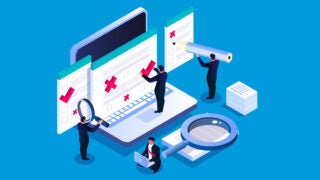Experts Available to Speak About California Drought
Contact: Robert Perkins at (213) 740-9226 or perkinsr@usc.edu
Despite this week’s light rain, California remains locked in a three-year drought with no significant relief in sight. USC scientists and engineers can help explain the significance of this drought and new technology aimed at relieving the burden on the state’s tight water supply.
Sarah Feakins, Assistant Professor of Earth Sciences at the USC Dornsife College of Letters, Arts and Sciences, is available to place the current drought in a historical perspective.
Feakins, a paleoclimatologist, uses plant leaf waxes from sediment cores to reconstruct the climate of the past — and has found evidence of droughts that have lasted for decades — even centuries. Climate models further indicate that we are heading into a drying period for the Southwest United States.
“The current drought is the worst in 100 years, but bad as this is, things could get worse,” Feakins said. “Extreme and long-lived droughts have happened before, naturally, and could happen again. Worse still, climate change predictions are for a drier California. We need to wrap our heads around water scarcity; our water planning needs to reflect that.”
Feakins can be reached at (213) 740-7168 (office); or feakins@usc.edu.
Amy Childress, professor and director of the Environmental Engineering Program at the USC Viterbi School of Engineering, is available to speak about the potential to desalinate sea water to create a new water source for California.
With 840 miles of coastline, California is perched next to one of the largest sources of water on Earth and yet California has been slower than other arid regions to adopt seawater desalination. However, the cost of seawater desalination has decreased significantly, and in fact, the cost has become very competitive with the cost of imported water and reuse water.
Childress can speak about the history of desalination, the current state of the technology, and a promising new technology that her research group is testing, called Reverse Osmosis-Pressure-Retarded Osmosis (RO-PRO). RO-PRO reduces the energy requirements for reverse osmosis and at the same time, dilutes the brine stream that is discharged to the sea so there is less harm to the environment.
“Seawater desalination is a drought-proof water supply that must be considered in the portfolio of water supply options in arid regions. Research is being done at USC to decrease energy requirements and offer environmentally friendly solutions to brine disposal issues.” Childress says.
Childress can be reached at (213) 740-6304 (office); or amyec@usc.edu.
Mahta Moghaddam, professor of electrical engineering at USC Viterbi, is available to speak about some of the tools that scientists are developing to track soil moisture levels in Central California, among several other locations in North America.
With more than 80,000 farms and ranches producing $44.7 billion dollars worth of agricultural revenue in 2012, California is the nation’s top agricultural producer. Yet because of the drought, California farmers will receive no water from the State Water Project for the first time in 54 years.
Moghaddam and her research group create tools that track moisture levels in soil, including on agricultural land. In addition to networks of ground sensors that go down to three feet deep, she and her team, collaborating with NASA/JPL, developed an airborne radar system that generates ground-penetrating waves to measure profiles of moisture during several flights over Central California. The next set of three flights is currently scheduled for the next two to three weeks. In addition, her team is working with NASA and JPL on a device that will be launched into space aboard a NASA satellite in October that will use microwave measurements to record surface moisture.
“Tracking moisture levels can tell not just about droughts, but about the drivers of climate change as well,” Moghaddam said. “It’s going to be interesting to see what we learn from this year’s data.”
Moghaddam can be reached at (213) 740-4712 (office); or mahta@usc.edu.
###



